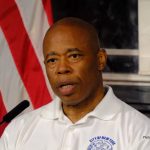I write to provide you with the latest information on our financial picture and steps we are taking to address a structural deficit in our budget. As you may recall, I sent out a number of campus memos early in the fall semester and made remarks at College Council throughout the semester detailing the serious nature of our budget for this year (FY20). All of these memos and remarks are available on the President’s Homepage.
In these fall communications, I described our challenge as, “… somewhere between a $2.5M and a $5.0M problem in order to achieve a balanced budget for FY20.” At the end of fall semester, this estimate was right on target and the number has solidified at approximately $4.1M. Working with CUNY, we have developed a plan that will allow us to close this shortfall in a manner that will avoid laying off staff, but will nonetheless require continued shared sacrifice. CUNY has agreed to fund initiatives like the HPCC and will provide assistance with mandatory costs. Additionally, they are loaning us funds this year that will be paid back over the next three years. That will leave us with approximately $1.4M to fund through the use of our own efficiencies and non-tax-levy funds.
While I mentioned that these measures will close this year’s gap, it is imperative that we continue to find savings and efficiencies to avoid similar conversations in the future. Tuition and fees at CUNY are some of the lowest in the nation so CUNY, in addition to requesting a tuition increase of $100 per semester, has requested an increase in student fees of $60/semester for health and wellness. Our mandated student fees are now about $475/semester and, if approved, the increase would put us closer to SUNY fees, which are more than $1,710/semester.
There are also positive signs in our enrollment as applications are up 18% from last year and our collection efforts are bearing fruit, with an additional $860k collected through November over last year.
With the help of Academic Affairs, we’re also improving our class scheduling. This winter session, we ran 16 fewer sections, but had more students. Make no mistake, these efforts, along with controlling our headcount, may have been unpopular, but were important in garnering additional support from CUNY. CUNY believes in our Mission and our Strategic Plan and has noted the improvements we have made. Even with their help, it will take understanding from the College community and will require us to continue operating in an austerity mode for the remainder of the fiscal year.
That said, we cannot lose this momentum on our savings efforts, starting with the four items I detailed in the fall:
- Our collections must continue to improve.
- Enrollment, including both admission and retention, must increase.
- The Provost, in partnership with the faculty, must find sensible efficiencies in workload, reassigned time, and address courses with workload credit that exceed student credit, course caps, and the appropriate use of adjuncts, sub lines, and lecturers. This spring, we will reduce adjunct hours by 10%.
- We must explore efficiencies outside of Academic Affairs such as rebidding of contracts, saving money by hiring our own staff rather than the use of contracted services, and in other areas, using more contracted services, moving staff from lower to higher need areas, combining units with similar functions, and implementing the use of shared services.
On this last point, in the next few weeks I expect to make some staffing moves that will provide critical support to our schools in advising students. These moves will be made in consultation with the Divisions and the affected staff.
In addition to continuing with these four initiatives, we need to closely monitor our personnel costs and I am implementing a hiring freeze. It makes no sense to bring on more staff under our current budget situation. I have previously written about the unsustainability of having a budget with PS costs so high that it leaves little money for needed supplies, professional development, or campus repairs. If there are health and safety positions that go vacant, I will review their critical need as appropriate.
While the above actions will present challenges, they will also present opportunities to improve our institution. I personally believe this is very good news and we will get through the year. I firmly believe that our future is bright, our enrollment will return, and we will continue to celebrate and build on the many outstanding accomplishments of this academic year.
By William J. Fritz















